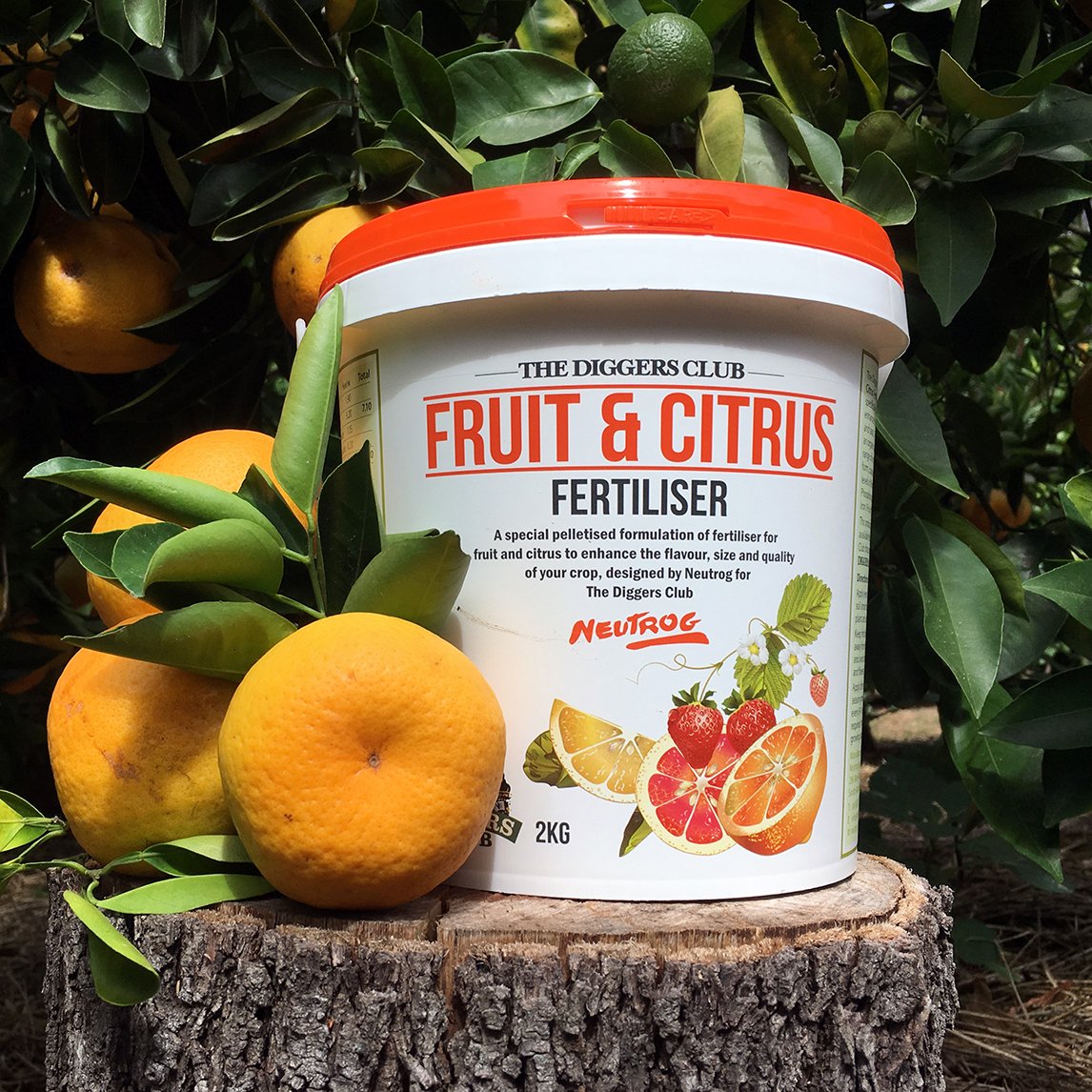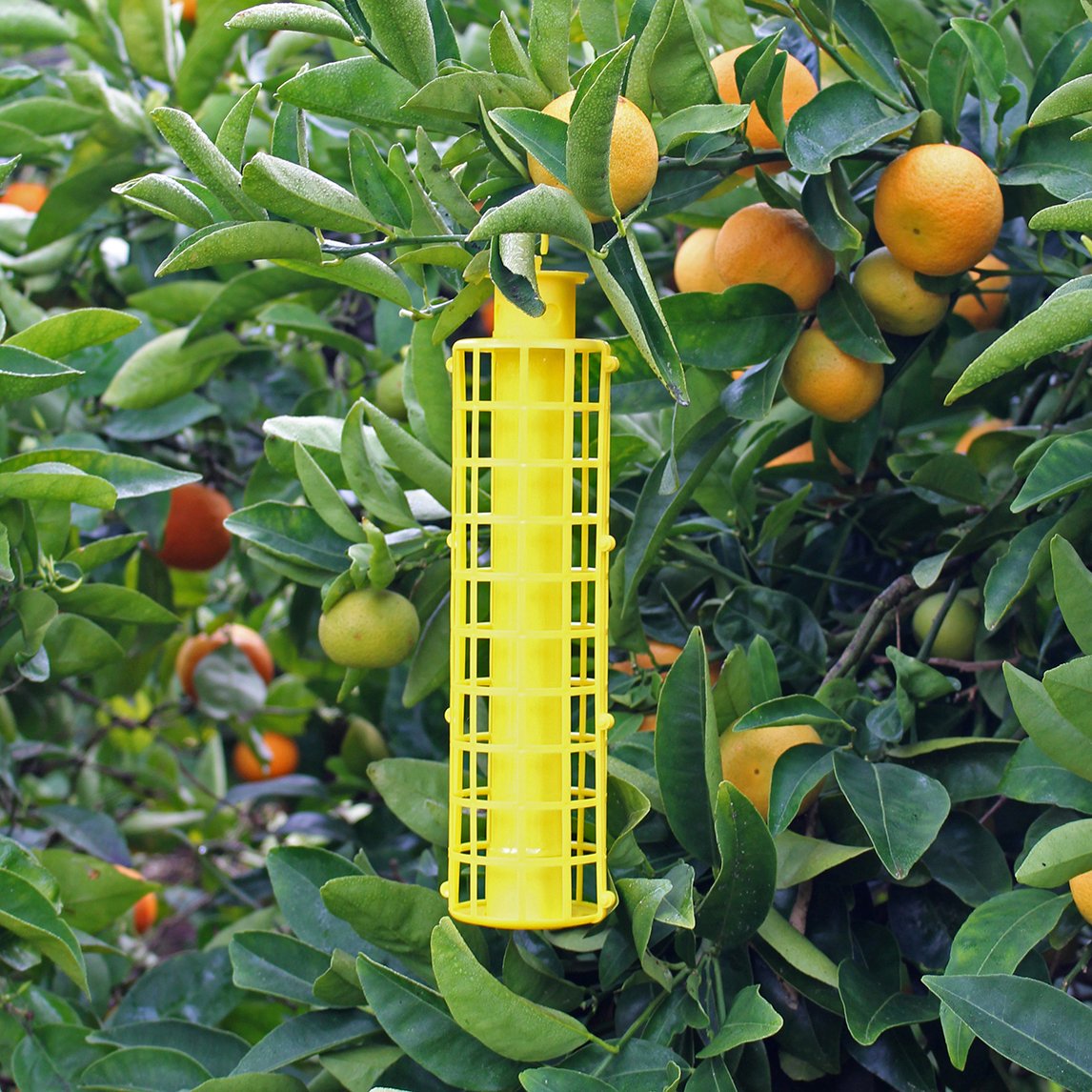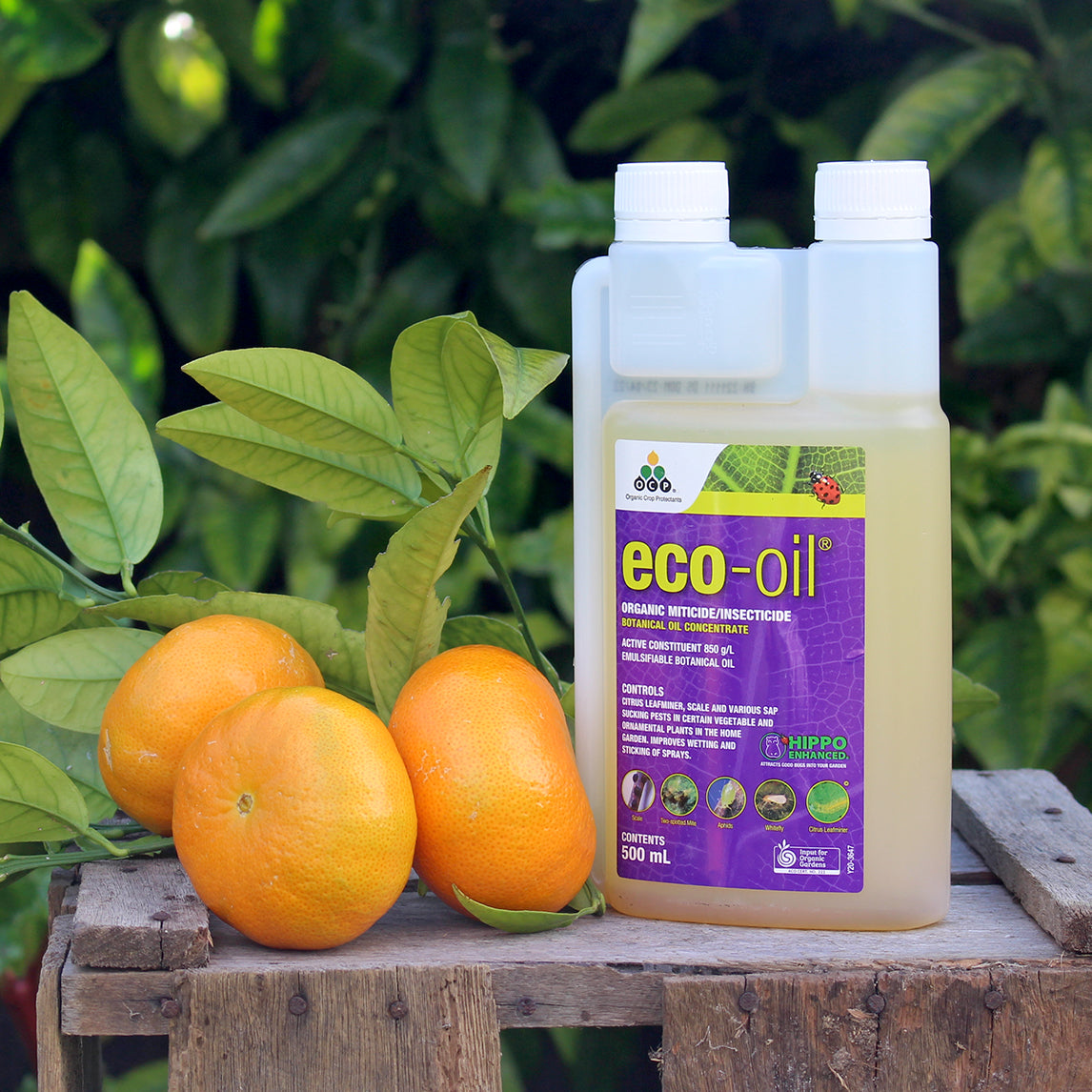
Citrus spp., Fortunella spp.
Citrus fruits originated in South East Asia and India, with Australia having some citrus relatives. They arrived in Australia with the First Fleet where they settled into almost every back garden in suburban Australia, to say nothing of our huge commercial plantings.
Of all home garden fruiting trees, citrus are the most ornamental. Brilliant green glossy foliage can be enjoyed year round, the pristine white flowers are not only beautiful, but fragrant, and the fruit hang like glowing lanterns from the branches. How can any garden be without one of this tribe?
Easily pruned to shape, citrus make elegant trees by themselves, or can be planted together to make a dense screen or hedge. They live for 20-30 years and can start to fruit as early as 3 year's old.
The earliest recording of citrus in European civilization is of the citron, a relative of the lemon, back in 230BC. Today in Australia, citrus are the most popular fruit tree found in backyards. Orange and lemon varieties were introduced here in 1788, with the arrival of the first fleet.
Citrus are attractive evergreen trees with deliciously fragrant flowers and brightly coloured fruits with enormous health benefits so they rightly deserve their place in our gardens. There is a different type of citrus for almost all soil types and climatic zones in Australia. Generally, citrus can cope with mild frost only once established which corresponds with Diggers Cold Zone 9b and above. The best types for the cooler southern states are lemons, kumquats, mandarins and oranges, plus the cold hardy Rangpur lime. However, cold will enhance the beautiful red pigments in Blood oranges.
Cultivation
Citrus trees need plenty of sun and good drainage, so light soils are ideal. For those with heavier soils plant your tree on a raised mound. All soils should be prepared with well rotted manure, blood and bone, and potash. If you have very alkaline soil, dig in sulphur, as citrus will develop pale, yellowed leaves in pH 8+ soils. This is a sign of iron deficiency. Iron is not available to the plant at such high soil pH levels, so continued application of sulphur will be needed to maintain a more neutral pH.
Plant your well-watered tree in spring, (when the soil temperature is about 16°C), having cleared at least 1 metre diameter of space around your planting hole. Citrus have roots growing close to the surface, so other plants will rob your tree of moisture and nutrients if allowed to remain. Once your tree has become established, shallow rooted groundcovers can be introduced (not ivy), but it is best to keep cultivation under the canopy to a minimum.
Make sure that the tree is planted at the same depth as it was growing in the container. It is perfectly normal to see the thick crown roots on the actual surface of the soil. Mulch well, making sure that the mulch does not come into contact with the trunk, as this can cause collar rot, which can kill your tree. Water in well. However more citrus are killed by over-watering and bad drainage, than by drought.
New growth is killed by frost, which could kill a young tree. In cooler areas plant your tree near a north- or west-facing brick wall, paved area, or a pool, as these will act as heat sinks, creating the desired microclimate.
Train your tree to 3 or 4 main branches, cutting back vigorous shoots to a few buds in late winter, and tip pruning young shoots to keep the tree compact.
Yellowing leaves and leaf loss, are usually symptoms of cold weather (especially with lemons), lack of fertilizing, or iron deficiency brought on by highly alkaline soils. The weather will change, fertilize with blood and bone (high in nitrogen), and use iron chelates and sulphur to correct these soil deficiencies. The solutions are simple.
The major pest for home gardeners is caused by scale and other insects, which lead to the development of sooty mould. This is when the tree looks like it is covered in a black sooty powder. Eradicate this problem by spraying with white or pest oil. A preventative spray in early spring is advisable. In really hot districts citrus bark can suffer from sunburn, use white water-based paint on the trunk to alleviate this problem.
Care and maintenance
When you receive your plants place them in a sunny position and water well. Plant out trees as the season begins to warm and root development is active.
To aid establishment, liquid feed with a seaweed based plant tonic during planting and every fortnight for the first few months followed by regular feeding. In windy locations, plants will need to be staked and guarded. On young developing trees, it is important to remove flowers and immature fruit for the first few years, to ensure energy is directed into developing a good framework.
Rootstock
The type of rootstock your tree is grafted to will influence the ultimate size of your tree, and its resistance to some diseases and soil conditions.
Trifoliata rootstock is dwarfing and will produce a tree of about 1.5m high, which is cold tolerant and resistant to nematodes and collar rot. This makes trees on trifoliata rootstock ideal for cooler climates, heavier soils, and for growing in small gardens or in pots.
Citrange rootstock will produce a larger tree from 2 to 4m tall. It is tolerant of alkaline soil conditions and cold, but intolerant of poor drainage. It is the rootstock chosen for home gardens because it’s faster growing – even if plants are too high to pick. It is the ideal stock if you want to use your citrus as an evergreen screening plant.
Tips on pruning
Citrus pruning is relatively straight forward. As most fruit is produced on the outer canopy, trimming this will encourage new growth and increase fruiting the following year. An annual prune after harvest will keep your citrus compact and vigorous. This should be timed after any chance of frost has passed. Older trees can be restoratively pruned to encourage vigour and improve yields. They respond to a hard cut back and regular removal of dead branches.
Tips on feeding
Citrus trees need high amounts of nutrients. Feed plants when roots are actively growing which occurs in temperatures 13°C and above and when soil is moist. In most situations this occurs in spring and early summer. Apply food to trees after planting, ideally at least one month after planting. Diggers stock a specific fertiliser for citrus trees that will ensure their ongoing health.
Pests, disease and control
Established citrus are fairly robust plants, and can generally withstand insect attack. However, severe infestations occasionally require attention, particularly with younger plants. Pests are often exacerbated by favourable climatic conditions, and will pass as these conditions change. By far the most common problems are associated with scale and aphis.
The most common pest and disease symptoms and control are outlined below:
Scale and Aphis: A common problem for most citrus varieties, these annoying pests produce honeydew that will encourage sooty mould, and subsequent ant infestations.
Control: On young trees, scale is easily removed by hand, or using a soft brush and soapy water. Control of scale and aphis on established trees can be achieved by using eco oil, pest oil or soap spray. Predatory insects such as ladybirds, lacewings and wasps will also help in controlling scale populations.
Sooty Mould: This fungal disease appears as fine ‘soot’ over leaves and fruit. It feeds on the honeydew produced by scale and aphids.
Control: Controlling insect populations will reduce and prevent outbreaks of sooty mould. See scale and aphis control.
Citrus Gall Wasp: Infection appears as large swollen disfigured stems (galls) caused by wasps laying their eggs into stem tissue and the hatching larvae feeding on the tissue causing callusing. Larvae take 2 years to mature and will usually emerge in spring, creating small ‘shot’ holes in the gall.
Control: The best method of control is by cutting off all infected branches and destroying by burning. Never compost infected material.
Citrus Leaf Miner: Small adult moths lay eggs on the leaves in spring and autumn. The resulting larvae then burrow their way into leaves leaving a distinct zig zagging pattern across leaves.
Control: Cut off and destroy any infected leaves as soon as you notice any symptoms. Pest oil at 25% dilution is also useful in that it will deter moths from laying their eggs on leaves. This is best applied in early summer through to early autumn every few weeks until you get in under control. Natural predators such as Lacewings will also help control populations.
Tips on growing
- Protect trees from sunburn by painting the trunk with lime wash in spring.
- Feed plants when roots are actively growing, which occurs in temperatures 13°C and above and when soil is moist. In most situations this is in spring and early summer.
- Harvest fruit only once it reaches the desired colour and flavour.
- Citrus do not need pruning, but an annual prune after harvest will keep your citrus compact and vigorous. This should be timed after any chance of frost has passed.
Steps on growing
- Prepare the soil: Dig a hole twice as wide and twice as deep as the pot prior to planting. Use the tree as a guide to ensure correct placement.
- Soak prior to planting: Place the tree in a bucket of diluted seaweed solution for several hours prior to planting.
- Place in the planting hole: Back-fill the hole so that the tree is planted at the same depth in the soil as it was in the pot. Back-fill around the roots and firm down to keep secure and in position.
- Mulch to 10cm: Apply a layer of mulch to improve moisture retention of the soil and to prevent competition from weeds. Do not mulch all the way to the stem as this can cause crown rot.
- Fertilise monthly: Citrus are shallow rooted plants and gross feeders. Fertilise monthly using Fruit and Citrus Fertiliser.






